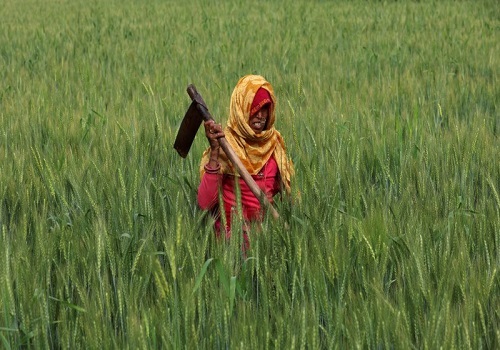Thriving Harvests and Rainfall Realities: India's Summer Crop Surge Amidst Varied Pre-Monsoon Showers by Amit Gupta, Kedia Advisory

India witnesses a robust 7.5% surge in summer crops coverage, exceeding normal levels by 5 lakh hectares, with notable expansions in paddy, pulses, oilseeds, and nutri cereals. Despite varied regional rainfall patterns, Central India experiences a significant surplus, while the south peninsula grapples with a 70% deficiency.
Highlights
Increase in Summer Crops Coverage: The area under summer crops has risen to 71.80 lakh hectares, marking a 7.5% increase compared to the previous year's 66.80 lakh hectares.
Exceeding Normal Levels: The current summer crops coverage surpasses the normal level by 5 lakh hectares, with the total normal area estimated at 66.01 lakh hectares based on the last 5-year average.
Expansion in Summer Paddy Cultivation: Sowing of summer paddy has expanded to 30.30 lakh hectares, reflecting a 10% increase from the year-ago period.
Growth in Summer Pulses Acreage: Acreage for summer pulses has increased by 4.3%, primarily due to higher coverage of moong. Moong sowing has risen to 16.76 lakh hectares, while urad coverage has slightly decreased.
Distribution of Summer Pulses Growers: Key growers of summer pulses include Madhya Pradesh, Bihar, Odisha, Tamil Nadu, Uttar Pradesh, and Gujarat.
Rise in Oilseeds Acreage: Oilseeds acreage has grown by 4%, with groundnut and sesamum witnessing an increase in cultivation.
Expansion in Nutri Cereals and Maize Cultivation: Acreage for summer-grown nutri cereals and maize has increased by 10%, driven by higher coverage of jowar, bajra, and maize.
Rainfall Trends: Cumulative rainfall during the pre-monsoon season is currently 15% below normal on a pan-India basis. While Central India and the north-west region have experienced surplus rainfall, the south peninsula and east/north-east India face deficiencies.
Conclusion
The burgeoning summer crop acreage signals optimism amidst agricultural challenges, bolstered by proactive measures and favorable cultivation conditions. However, the disparity in rainfall distribution underscores the importance of adaptive strategies to mitigate potential risks and ensure food security across diverse regions. As India navigates the intricate dynamics of agricultural productivity and climate resilience, sustained efforts towards sustainable farming practices and effective resource management remain paramount for fostering resilience and prosperity in the agrarian landscape.
Above views are of the author and not of the website kindly read disclaimer



















